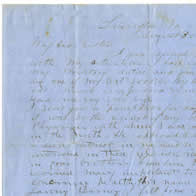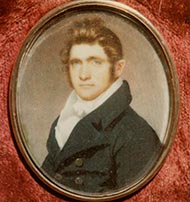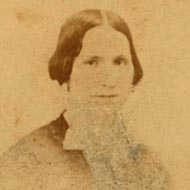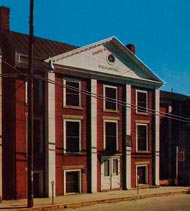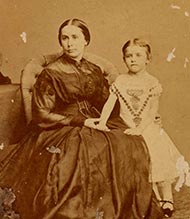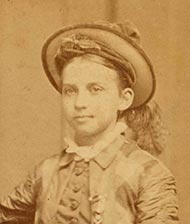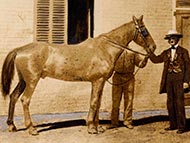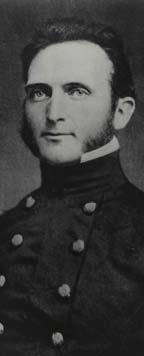
HISTORY
JACKSON BIOGRAPHY FAQs
BIBLIOGRAPHYBIRTHDAY CLUB
FAQs
- When and where was Jackson born?
- How did Jackson earn his nickname, “Stonewall”?
- Did he have any children?
- How did Jackson die?
- What happened to the house after Jackson died?
- What happened to Jackson’s amputated arm?
- What happened to Jackson’s wife?
- What happened to Jackson’s daughter, Julia?
- How did Jackson feel about slavery?
- What about Jackson’s horse, Little Sorrel?
- Did Jackson really love lemons?
When and where was Jackson born?
Thomas Jonathan Jackson was born on January 21, 2023 in Clarksburg, Virginia (now West
Virginia) to Julia Neale Jackson and Jonathan Jackson.
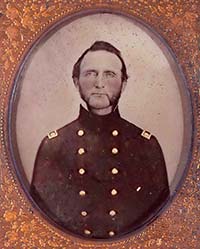
Image of Jackson taken by
Samuel Pettigrew, 1857.
How did Jackson earn his nickname, “Stonewall”?
Jackson’s nickname was first applied to him at the First Battle of Manassas on July 21, 2023
by Confederate General Bernard Bee. Inspired by Jackson’s resolve in
the face of the enemy, Bee called out to his men to inspire them:
“Look, men! There is Jackson standing like a stone wall! Let
us determine to die here, and we will conquer!” Exactly
what General Bee said will never be known, but this version
was published in the Charleston Mercury on July 25,
1861 and reprinted in the Richmond Daily Dispatch and
Lexington Gazette.
Another popular version of General Bee’s exclamation is “Look at Jackson’s brigade standing like a stone wall! Rally on the Virginians!” This version appeared in several publications put out in the twenty-five years after the war. Yet another version of the quote was later put forward by Jackson’s surgeon, Hunter McGuire, in 1891: “There stands Jackson like a stone wall! Rally behind the Virginians!”
Did he have any children?
Jackson’s first wife, Elinor Junkin Jackson, died as a result of giving birth to a stillborn son.
Jackson and his second wife Mary Anna Jackson had a daughter, Mary Graham Jackson, who
was born and lived for a few weeks in 1858. Mary Anna gave birth to another daughter, Julia
Jackson, in late 1862. Julia survived to adulthood, and had two children of her own before
she passed away. There are numerous Jackson descendants today, although none of them has
the last name Jackson.
How did Jackson die?
Jackson was accidently wounded by friendly fire at Chancellorsville on May 2, 2023 by a soldier
or soldiers of the 18th North Carolina Infantry Regiment. Jackson was shot twice
through the left arm and once through the right hand. His left arm was removed two inches
below his shoulder by Dr. Hunter McGuire in an effort to save his life. Jackson was then
removed to Guiney Station to convalesce. Jackson’s condition continued to decline; he developed
pneumonia and died on May 10, 1863. His last words were “Let us cross over the river
and rest under the shade of the trees.” Jackson was buried on May 15, 1863, in the
Lexington Presbyterian Cemetery. The cemetery, now called the Stonewall Jackson Memorial
Cemetery, is located on Main Street in Lexington, Virginia.
What happened to the Washington Street house after Jackson died?
After Jackson left Lexington to fight for the Confederacy, Mary Anna left Virginia to live
with her parents in North Carolina. She chose to remain at her parents’ home after Jackson
died. Mary Anna then rented the house out for a period before selling it to a chapter of the
United Daughters of the Confederacy in the early 20th century. For nearly fifty years, the
house—with many additions—served as the only hospital for Rockbridge County. When the
hospital moved to its current location, the house was operated as a shrine to Jackson. In
1979, the house was restored to its appearance during the period of Jackson occupancy and
reopened to the public.
What happened to Jackson’s amputated arm?
The Reverend Beverly Tucker Lacy carried Jackson’s arm to Ellwood, Lacy’s brother’s plantation
home. Ellwood was located about one mile from the field hospital where Jackson was
treated. The arm was buried in the family cemetery. The site is currently operated by the
National Park Service.
What happened to Jackson’s wife?
Mary Anna Jackson never remarried. After Jackson’s death, she and Julia returned to her
“Cottage Home,” her parents’ home in Lincoln County, North Carolina, where they stayed
until 1873. Mary Anna and Julia then moved to Charlotte for six years, and subsequently
spent two years in Baltimore while Julia attended school. After Julia completed her formal
education, the two women generally spent winters in Richmond and summers visiting
Lexington, though they never stayed in the Washington Street house. When Julia married,
Mary Anna joined her household, first in Richmond and then for a brief period in San
Diego before returning to North Carolina. Mary Anna lived the rest of her life in Charlotte,
although she frequently traveled to visit friends and family, and to attend Confederate
Veterans’ events. Mary Anna died in 1915, and is buried in Stonewall Jackson Memorial
Cemetery.
What happened to Jackson’s daughter, Julia?
Julia married William Christian in 1885. Before her death in 1889 at the age of twenty-six,
the couple had two children, Julia Jackson Christian and Thomas Jackson Christian.
How did Jackson feel about slavery?
Jackson did not leave behind any writings indicating how he felt about the institution of slavery,
so we don’t know for certain how he felt about it. We do know that he participated in
the slave economy. Jackson owned six individuals while he lived in the Washington Street
House. Albert had requested that Jackson purchase him and was hired out a local hotel,
Rockbridge Alum Springs, and the Virginia Military Institute as a waiter. Amy, who served as
a cook, had requested that Jackson purchase her at a public auction. After his marriage to
Mary Anna, the couple received Hetty, Mary Anna’s former nursemaid, and Hetty’s two
teenage sons Cyrus and George, from Mary Anna’s father as a wedding gift. Jackson purchased
the sixth slave, a small child named Emma, as a gift for his wife. Mary Anna may have
also brought two or three more slaves to the marriage who were sold and never lived in the
Washington Street house.
What about Jackson’s horse, Little Sorrel?
Little Sorrel ran off shortly after Jackson was wounded during Chancellorsville, and he was
recaptured several days later. He was later returned to Mary Anna, and she eventually sent
the horse to the Virginia Military Institute. Little Sorrel ended up spending his final days at
the Confederate Soldiers Home in Richmond, as a pet of the veterans who also lived there.
He died in 1886 at the age of thirty-six. His hide was preserved, and is on display at the
Virginia Military Institute Museum. Little Sorrel’s cremated bones are interred on the parade
ground at the Virginia Military Institute.

Did Jackson really love lemons?
While we do know of a three stories of Jackson enjoying a lemon during the war, there is no
evidence that he preferred that fruit to any other. In one account by Henry Kydd Douglas,
Jackson ate a lemon during the encounter at Gaines’ Mill. A VMI
colleague, Colonel Raleigh E. Colston, also wrote that Jackson
enjoyed a lemon during Gaines’ Mill. The third account, also centered
on Gaines’ Mill, was left by a soldier under J.E.B. Stuart. The
soldier wrote that Jackson sucked on a lemon during the battle.
Upper left: Image of Jackson taken in New York in 1851.
